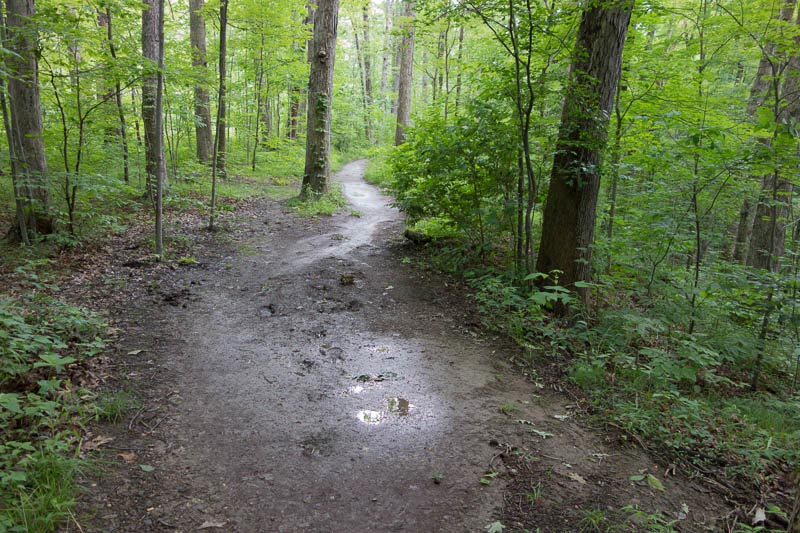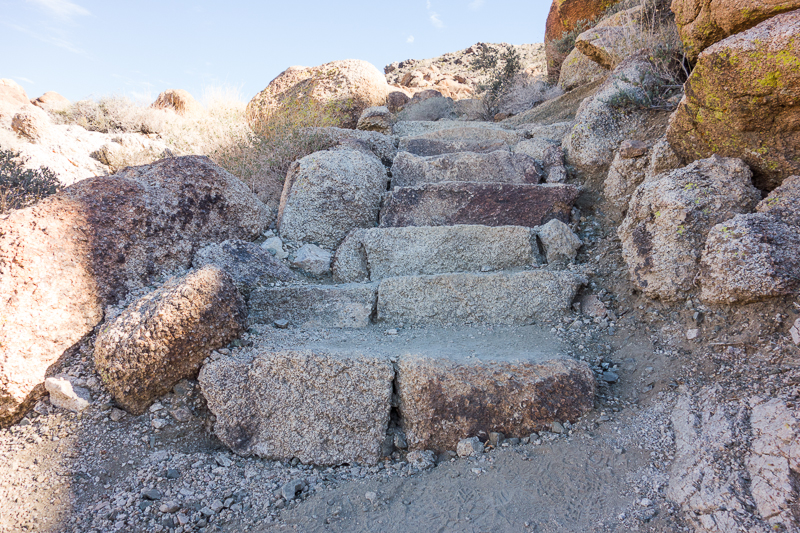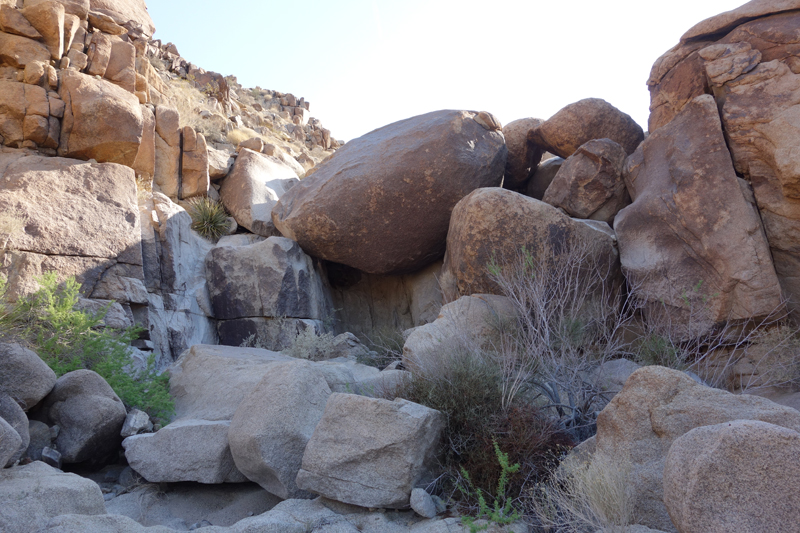Okay, bear with me in this.
wilderness
Before I discuss trails, we need to talk about wilderness. This is wilderness is spelled with a lower case dubyah. This wilderness is also often referred to, by many people, as wild places; there is no formal definition that is satisfactory.
Some folks who spend most of their lives in a city may consider a local park wilderness. Then there are those who day hike on heavily traveled well-groomed footpaths, never more than a short walk to civilization, who consider those places wilderness. Some people hike for a couple weeks at a time on a busy trail that is far removed from cities, such as the John Muir trail — those people would say, that is wilderness. Others who hike in places similar to the area traversed by the Muir Trail, but mostly travel off trail where other hikers are rare or nonexistent would say that place is truly wilderness. Lastly some would say the previous group, should they use technology on their hike utilizing such things as GPS or personal locater beacons, digital maps, trail guides, or technology driven pre-hike information such pictures, videos, satellite imagery, or anything that that provides technology-driven interpretation versus direct experience only, is not wilderness. None of these people are right, and none are wrong. “wilderness” is what each wants it to be.
WILDERNESS
Wilderness with a capital Dubyah is a legal definition. It was defined by the Wilderness Act of 1964. You can research the act via Google if you want to learn more. The key defining point in the act is stated as:
“A wilderness, in contrast with those areas where man and his own works dominate the landscape, is hereby recognized as an area where the earth and its community of life are untrammeled by man, where man himself is a visitor who does not remain.”
Very elegant and flowery rhetoric. The problem with the Wilderness Act is that it was created by legislation. Legislation means compromise. There is no black or white, only grays where principles are diluted by the common denominator, the common good, special interests, and special franchises. In the case of the Wilderness Act, designated Wilderness areas often allow existing mining, logging, and cattle grazing operations to continue on these public lands.
TRAILS
I have walked many ancient Native American trails, or I should say I have walked hard-to-find or remnants of these trails.
I suppose there are cases where these earlier human inhabitants actually constructed trails, but my experience is that these trails followed games trails or geographic features and the trails were created by use, not construction.
This is in contrast to the most popular backpacking trails today. Trails that are constructed with equipment, tools, wood beams and planks, stones and even cement. Trail builders sometimes even use dynamite to blast through rock to create an easier path.
We tend to build trails that make it as easy as possible to hike. Instead of walking directly up a mountain we design and manufacture a serpentine trails of countless switch backs. It is almost as if we are fighting nature instead of moving in harmony with the land. Once we build these trails we then maintain and repair them; we make them a permanent feature in our wilderness and our Wilderness.
Let’s take another look of some verbiage from the Wilderness Act:
“An area of wilderness is further defined to mean in this Act an area of undeveloped Federal land retaining its primeval character and influence, without permanent improvements or human habitation, which is protected and managed so as to preserve its natural conditions and which (1) generally appears to have been affected primarily by the forces of nature, with the imprint of man’s work substantially unnoticeable; (2) has outstanding opportunities for solitude or a primitive and unconfined type of recreation; (3) has at least five thousand acres of land or is of sufficient size as to make practicable its preservation and use in an unimpaired condition; and (4) may also contain ecological, geological, or other features of scientific, educational, scenic, or historical value.”
It is obvious to me that the language was intended to mean Wilderness designation will restrict human impact from the present time forward and allow it to remain untrammeled going forward in time. How does trail building and maintenance accomplish this? It doesn’t. It allows more and more people to travel by foot along a super-highway through the Wilderness, to the point we have to implement a permit system to manage all the people who want to enter the Wilderness via this easy access of trails.
CASE STUDY
The Pacific Crest Trail is arguably the most well-known long distance trail in the U.S. Traveling through California, Oregon, and Washington the trail takes the hiker from the Mexican border to the Canadian border. At over 2,600 miles most hikers need about 6 months to walk it in its entirety.
57% of the trail goes through either National Parks or designated wilderness areas. In 1980 almost 90% of the trail (2,270 miles) was completed. So the government put together a 5 year budget to complete the trail — a budget that was $12.8 million! “What?” you should be shouting right now. That is about $36 million in today’s dollars to build 400 miles of hiking trails.
I live near a section of the PCT that is known as the Desert Divide, and that section is within a federally designated wilderness area. I had hiked that area extensively prior to the official construction; along a section that was blazed by a gentleman named Sam Fink. Mr. Fink single handedly worked for about 10 years clearing a trail on the divide. I don’t especially endorse Mr. Fink’s actions, but they were much preferable to what the Government did to Fink’s trail. The Government spent 3 years cutting, digging, grading, drilling and blasting rock to complete this section of the PCT, a section that isn’t even 20 miles long. How can that be?
Consider this: many people who have never backpacked before have thru-hiked the PCT without a map or compass. Most of the year this trail, of which over 1,500 miles is in National Parks or Wilderness areas can be hiked without any navigation aid. Is this Wilderness?
It is time to get rid of the super highways (trails), let the Wilderness go fallow and truly let it be untrammeled by man.
Trails bisect wilderness and create boundaries that isolate us from the wilderness.
EQUAL ACCESS?
Some say, we must have trails so everyone has access to our wilderness areas.
Without trails, everyone who can walk will have access. The catch is they will need the skills to do it. Nature doesn’t care if hikers have the requisite knowledge and experience to survive; that is up to each individual. Almost anyone can visit the wilderness, the ability to do falls directly on their shoulders — no one else.
And of course, no trails will mean fewer people. With fewer people we can remove the permitting system and get rid of all the government workers who administer such.
THE JOY OF TRAILLESS HIKING
I find that hiking on well used trails is difficult. Because I am not focused on where I am placing each foot, I am not attentive to the details of my hike. These are the trails where my mind gets mesmerized with the monotony of the trail, and these are the trails I trip on; little rocks or tree roots that loom up as large obstacles.
Some hikers get so bored with trails they listen to music with headphones and a MP3 player. That is a sad state of affairs
Why would the hiker want to walk exactly where the trail builder wants him to walk? Shouldn’t the hiker decide, for himself, the best route to take? Yes! The answer is yes! But this independence and freedom requires much more from the hiker. The hiker must know exactly where he or she needs or wants to go, and what route to that point is best. The hiker must also be flexible to know that a chosen route may not be the best one, and be able to re-route mid-hike. Being able to “read” the lay of the land becomes a critical success factor. This is all about freedom to make your own decisions, becoming the master of your destiny, becoming accountable for every choice you make – all of which can be quite liberating.
There is no more walking fast in a daze, no more boredom, no more listening to music, no more detachment from nature; the hiker must pay attention; must focus on the ground immediately below, the route ahead, the next destination. The hiker must be engaged with nature and his surroundings.
Of course walking off trail means navigating around stuff, like boulders and whatever nature can throw at you. You have to constantly look and plan ahead – that is a very good thing! Often you need to look at your feet and purposely plant each in a safe place, one-by-one; and is also a good thing. Don’t forget that sometimes you even get to move on all fours, pulling yourself up or steading your balance with your hands and arm muscles.
THE FINAL SOLUTION
I propose we stop building new trails. I propose we stop maintaining trails. I propose we remove all trail signs, cairns, and other directional tools.
In many instances, our tax money is used for trail construction and maintenance; trails that the majority of tax payers will never use. That isn’t right or fair. So let’s just get rid of all of this nonsense.
Learn to hike without the aid of trails. It is much more fun and rewarding.



